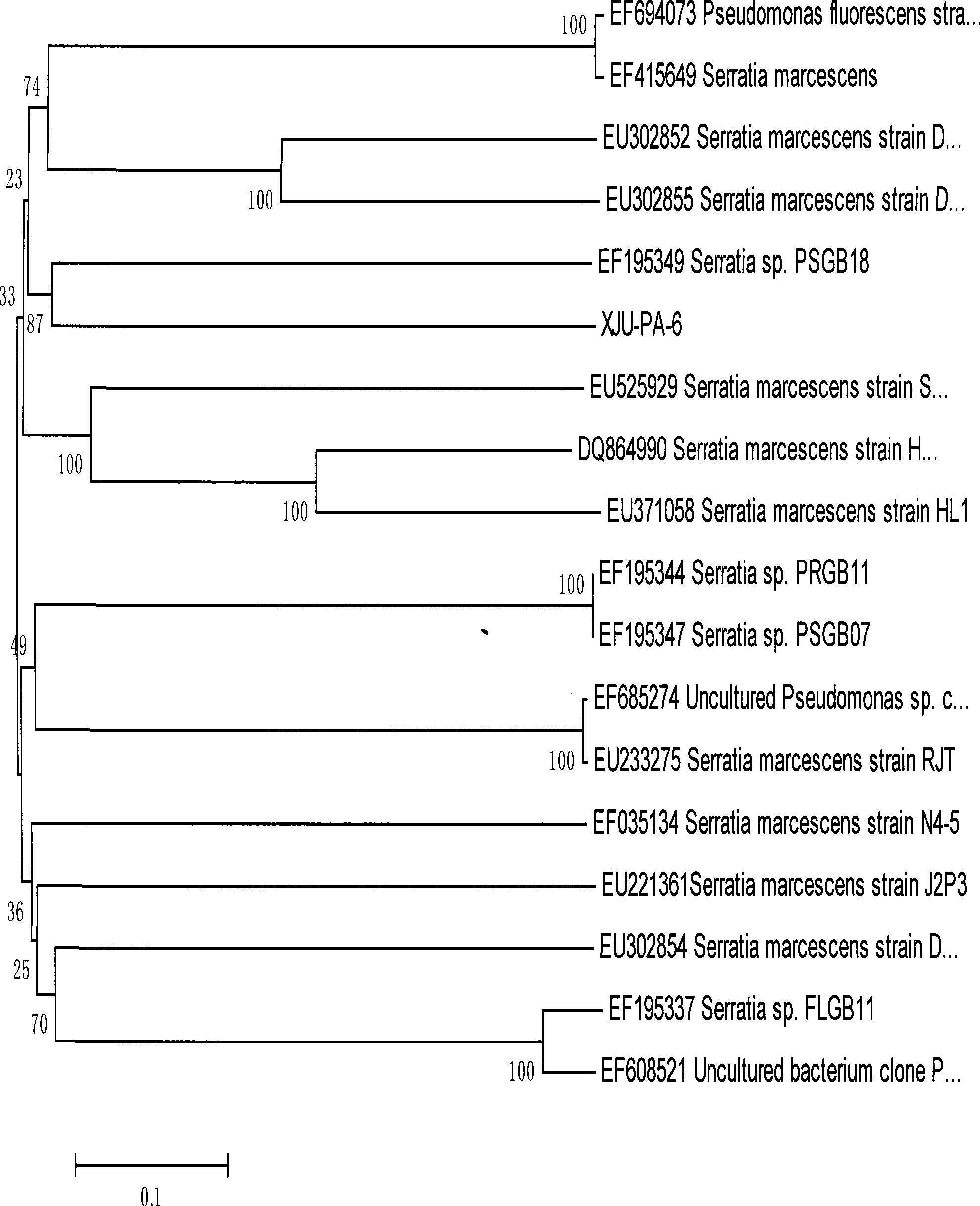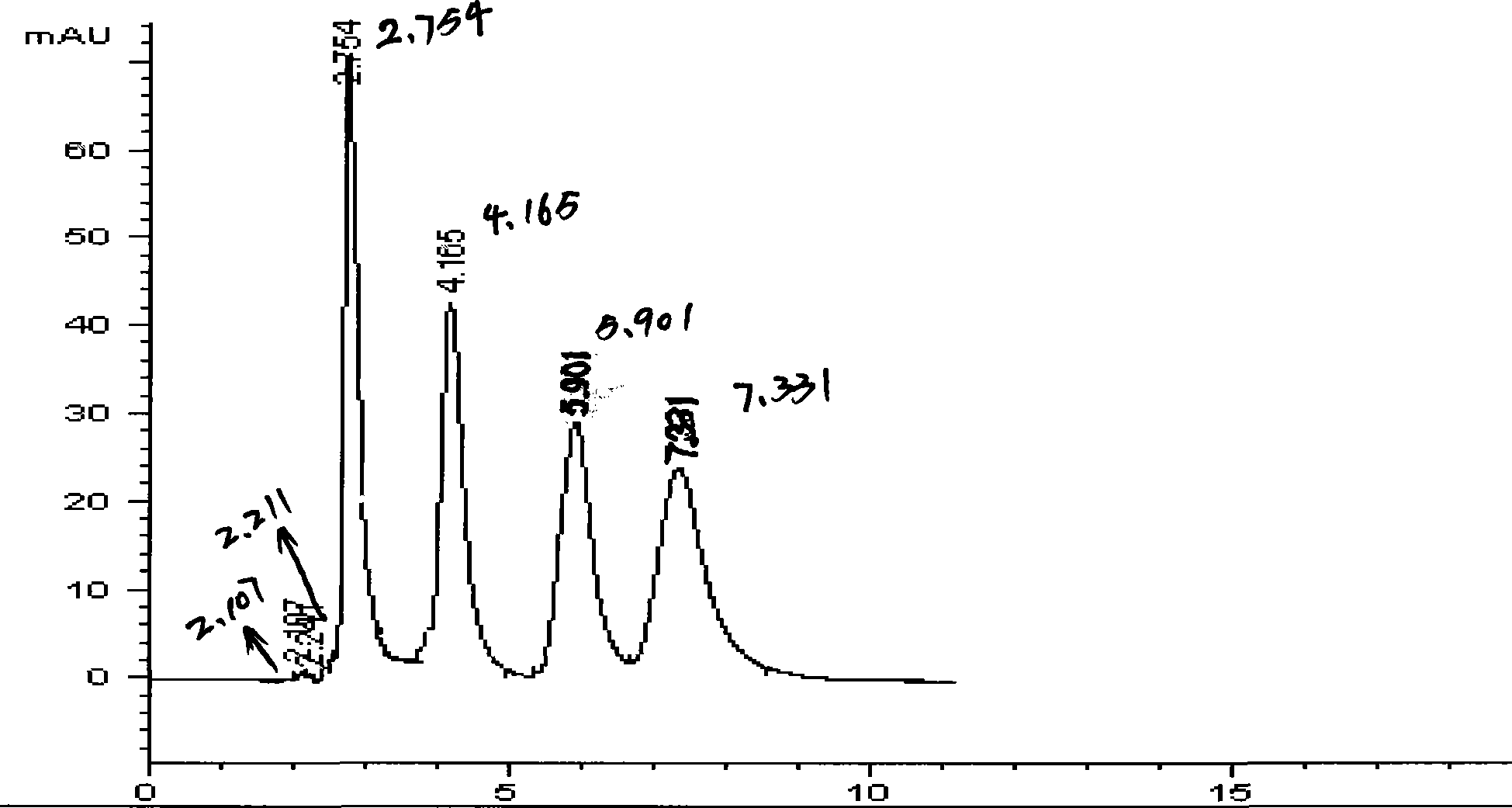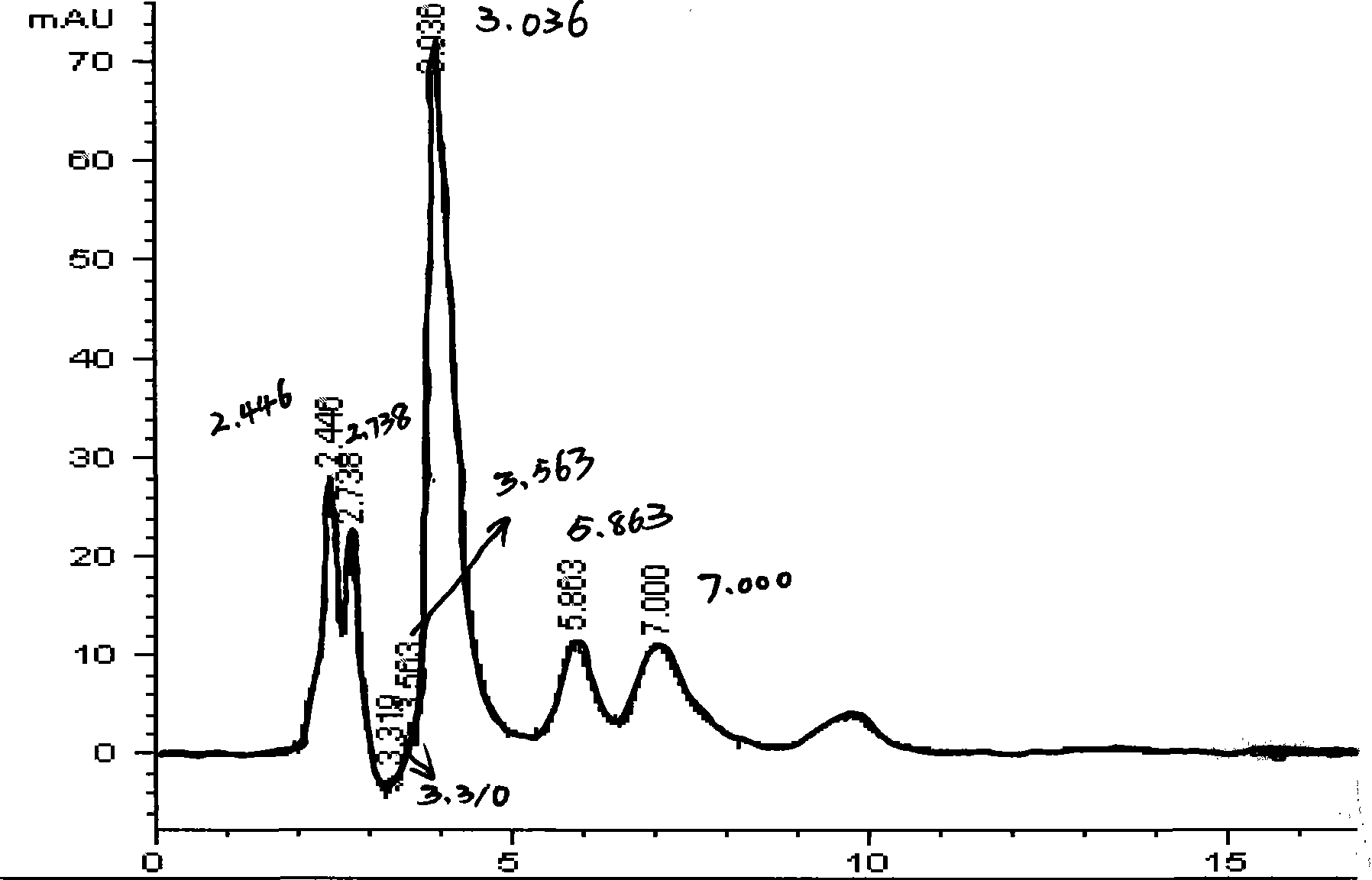Bacillus prodigiosus and prodigiosin producted thereby
A technology of Serratia marcescens and prodigiosin, applied in the direction of microorganism-based methods, bacteria, microorganisms, etc., can solve problems such as systematic research that has not been reported, and achieve good research prospects, high safety, and thermal stability strong effect
- Summary
- Abstract
- Description
- Claims
- Application Information
AI Technical Summary
Problems solved by technology
Method used
Image
Examples
Embodiment 1
[0043] Example 1: Screening of prodigiosin-producing strains
[0044] The present invention isolates the endophytic bacteria of Radix Paeoniae Alba for the first time, and screens the isolated 11 endophytic bacteria of Radix Paeoniae Alba, to obtain prodigiosin-producing strains. The specific steps are as follows:
[0045] Weigh 2 groups of root peony samples, each group has two parts of 7g each, first seal both ends of the material with a parafilm (because the root peony is a hollow plant) and then rinse with water for 3 minutes. Rinse 4 times with sterile water in the ultra-clean bench by crushing method, treat with 1% mercury liter for 13s, rinse 4 times with sterile water, use more than 100ml of sterile water in a 250ml triangular flask each time, and rinse under constant shaking 5min, rinse with sodium hypochlorite for 13 minutes, then rinse with sterile water for 5 times, finally add 6ml of sterile distilled water to grind, filter through three layers of sterile gauze, c...
Embodiment 2
[0047] Embodiment two, the identification of prodigiosin producing strain
[0048] 1. Observation of morphology and culture characteristics
[0049] The strain's individual morphological characteristics, colony morphological characteristics, motility, and physiological and biochemical characteristics were observed and measured with reference to "Bergey's Bacteria Identification Manual" and "Common Bacteria Identification Manual".
[0050] 1.1 Morphological structure observation
[0051] After the isolated bacteria were cultured on LB medium at 28°C for 1-3 days, the colony morphology was observed: needles, round, irregular, filamentous and branched; the edges of the colonies were neat, Corrugated, cracked, filamentous and curly; the height of the colony is flat, raised, raised, raised or sunken in the center, and the spore staining, Gram staining and bacterial morphology are observed, respectively according to the colony shape and color , cell morphology, presence or absence...
Embodiment 3
[0085] Example 3, Extraction of bacterial strain red pigment and identification of its structure
[0086] 1. Pigment extraction
[0087] Extraction takes the following two methods:
[0088] (1) Put an equal amount of absolute ethanol into the fermentation broth, vibrate on a shaker for 20 minutes, let it stand for 10 minutes, and centrifuge at 4000r / min for 10 minutes to remove impurities, and obtain a red supernatant, and continue to extract the residue 3 times repeatedly with absolute ethanol . The collected red supernatants were mixed and concentrated by a rotary evaporator to obtain a red viscous crude product.
[0089] (2) After culturing on MEA solid medium for 2 days, centrifuge at 4000r / min for 5min, add absolute ethanol to the precipitate to dissolve the pigment, centrifuge at 4000r / min for 5min, take the supernatant and concentrate it with a rotary evaporator to make it drying. Dissolve it with ethyl acetate, extract it twice with saturated NaCl solution, and dry...
PUM
 Login to View More
Login to View More Abstract
Description
Claims
Application Information
 Login to View More
Login to View More - R&D
- Intellectual Property
- Life Sciences
- Materials
- Tech Scout
- Unparalleled Data Quality
- Higher Quality Content
- 60% Fewer Hallucinations
Browse by: Latest US Patents, China's latest patents, Technical Efficacy Thesaurus, Application Domain, Technology Topic, Popular Technical Reports.
© 2025 PatSnap. All rights reserved.Legal|Privacy policy|Modern Slavery Act Transparency Statement|Sitemap|About US| Contact US: help@patsnap.com



